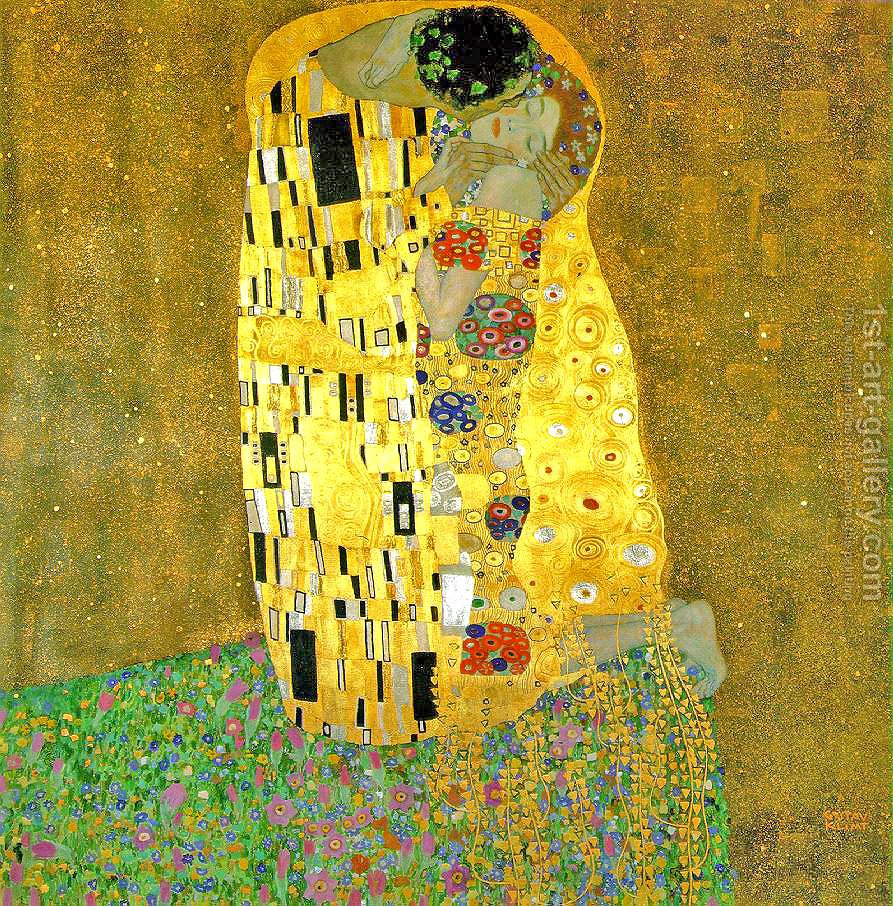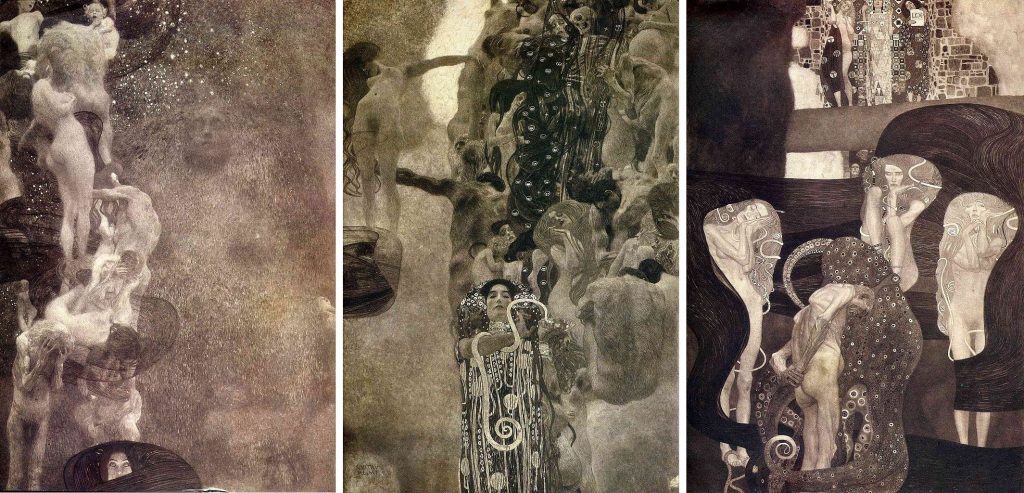Gustav Klimt was an Austrian symbolist painter in the last 19th and early 20th centuries. He was most interested in painting the female body and human figure in expressive and erotic ways that showed the domination of woman over man. He also painted many murals and landscapes of Attersee.

Klimt attended the University of Applied Arts in Vienna where he studied Architectural Painting from 1876-1883. He was poor during his time as a student but later gained popularity and wealth. He later became an honorary member of the University of Munich and the University of Vienna. Klimt received the Golden Order from Emperor Franz Josef I of Austria in 1888 and his painting Death and Life won him a prize in the World Exhibition in Rome in 1911.

Klimt’s “Golden Phase” was a period in his painting style that brought him very much positive critical reaction and financial success. He used gold leaf in his pieces throughout this time. His most well-known piece, The Kiss, came out of this period.

One of the most important things Klimt was a part of was leading the Vienna Secession Movement. The Vienna Secession was a movement of artists that revolted against academic art and provided exhibitions for unconventional and unknown young artists. He was a part of the movement from 1897 until 1908.

Although Gustav Klimt could be considered ‘unimportant’ in art history because he did not directly make any drastic changes, he was a very popular and influential artist. His most important influences include Egon Schiele and the expressionist movement. His mural work pioneered a union of art and architecture that went on to influence the Bauhaus and Russian Constructivism.

Klimt didn’t care for censorship or criticism, in fact he fought against it, aiming to ‘shake up the establishment’. There was major controversy around a ceiling he was commissioned to paint in the Great Hall of the University of Vienna (Philosophy, Medicine, & Jurisprudence). The piece was criticized as ‘pornographic’. This was the last time Klimt took a public commission; his fame brought him many patrons, but he could afford to be selective.
Sources
https://en.wikipedia.org/wiki/Gustav_Klimt